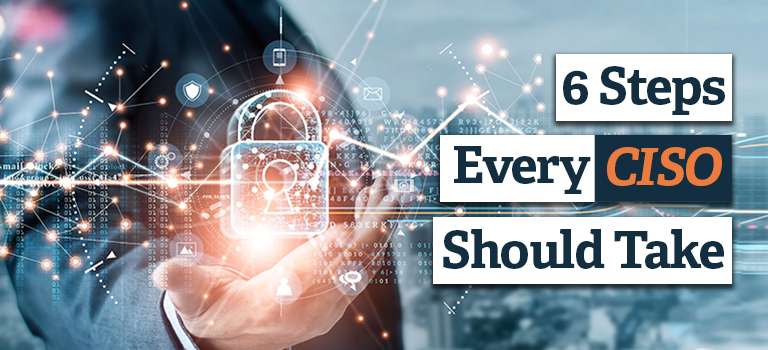Are you taking on the role of a CISO in your organization? Are you looking for ways to maximize business impact in your tenure as a Chief Information Security Officer? We have put together 6 impactful cybersecurity best practices to help you set your organization up for success.
6 Impactful Steps to Take as a CISO
1. Assess and Analyze the Status Quo – The Tech Stack, Processes, and Security Posture
The first, most important step for any CISO is to take stock of the tech stack, processes, and security posture, analyzing and evaluating them. This gives you critical information about what you are working with and forms a solid foundation to build your security strategy on.
Start by gathering insights on the security threats – known and emerging – facing the organization and the current security posture. Conduct an assets audit to know what assets exist and what vulnerabilities and risks they face.
Review the IT infrastructure and the tech stack. Assess the security technology, tools, WAF solutions, and defenses in place. Determine what controls are in place for incident prevention, intrusion detection and prevention, monitoring, tracking, and reporting malicious activities, security management consoles, Security Information and Event Management (SIEM) tools, logging solutions, Web Application Firewall, and so forth. Understand how your security tools provide alerts and triggers.
With the insights on the tech stack and security technology being used, you need to review and evaluate the security processes. Find out if there are incident response plans and assess their efficacy. Understand the regulatory frameworks and industry standards and if the organization is compliant, as non-compliance comes with huge penalties, fines, and reputational losses.
Also, understand if there are security awareness and training programs for the IT teams and the non-IT employees. Look for areas that do not have formal security policies and processes and start defining them.
You can start building and redesigning the organization’s security strategies and policies for positive business impact.
2. Align Cybersecurity with Business Goals
A siloed security not tied to the overall business goals is highly ineffective. CISOs must focus on the big picture – maximizing organizational success by minimizing business risks. CISOs must align cybersecurity to the overall business goals to achieve this.
- First, engage with every C-level leader to understand their concerns, priorities, and challenges regarding security. This will help you understand which areas are most valuable to the business. You can accordingly prioritize those areas.
- Connect security objectives to business requirements as identified by the C-level. This will help you in getting the necessary buy-in and budgets.
- Know your customers as it helps you understand who you are ultimately serving and how they perceive the organization. You can position security as a business driver through this customer lens rather than as a hindrance or compliance requirement.
3. Integrate Security Right into the Developmental Stages
If your organization doesn’t already have a secure development cycle, the time is now to get started. A secure Software Development Lifecycle (SDLC) is foundational to keeping the organization secure and ensuring a positive business impact. Customers prefer secure development, secure apps, websites, and APIs. In other words, it instills trust among customers using these. Therefore, it is paramount to integrate security into the development stages.
4. Build Capabilities and Expertise within Your Team
Every CISO needs to be backed by a capable team of security experts. Analyze the skill gaps within the security organization and focus on filling these gaps. To this end, you can hire new people to fill key roles. Given the severe shortage of skilled cybersecurity professionals, more important is strengthening the cybersecurity skills and capabilities of the existing professionals. Identify the hard and soft skills needed for cybersecurity today and train your team accordingly.
Suppose you do not have the resources to hire new professionals or provide capacity building. In that case, you could hire the services of security experts like Indusface to work as an extension of your security team.
5. Focus on Building a Security Culture with the Organization
A strong and sustainable security culture is necessary to set up your organization for a positive business impact. This way, employees do not view security as an impediment but as something positive. They will consciously avoid errors that could lead to catastrophic consequences, including financial and reputational damage to the organization.
- C-suite buy-in is critical to building such a culture. You must work towards raising awareness among C-level leaders first.
- Inculcate basic cybersecurity skills among employees to help them prevent errors, report suspicious activities, etc.
6. Getting Your Budget
Instead of just numbers and technical jargon, use visual aids and communicate to demonstrate how effective the security will be in risk mitigation, maintaining brand reputation, and preventing financial damage. This will help the C-suite shed their perception that security is a cost center and instead look at it as an investment.
Conclusion
Be a trailblazer in your tenure as a CISO and set up your organization for a positive, long-lasting business impact. Start with these six impactful best practices.
Vinugayathri Chinnasamy
Tags: best business practices, Best cybersecurity practice, Business Security, CISO



